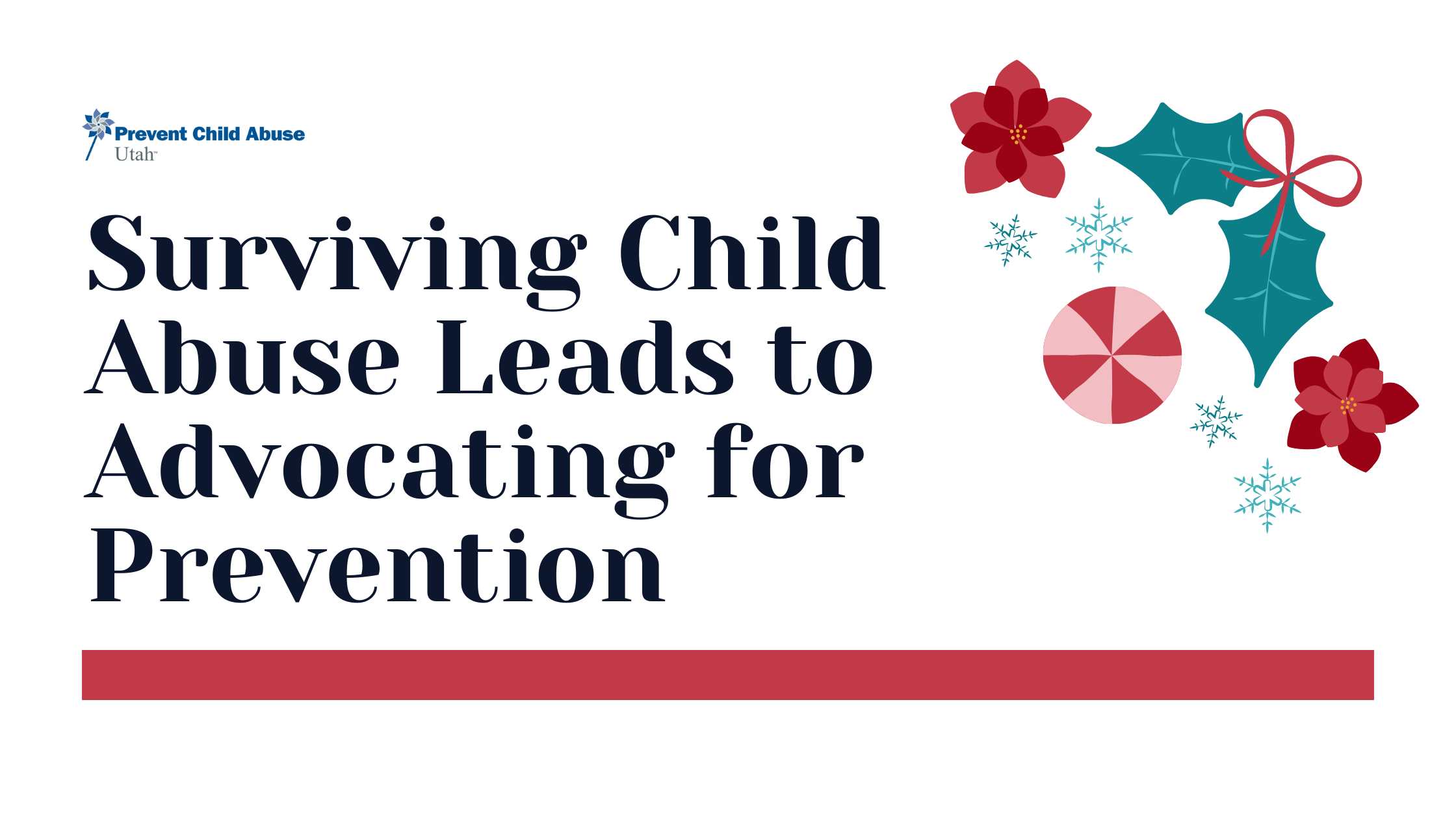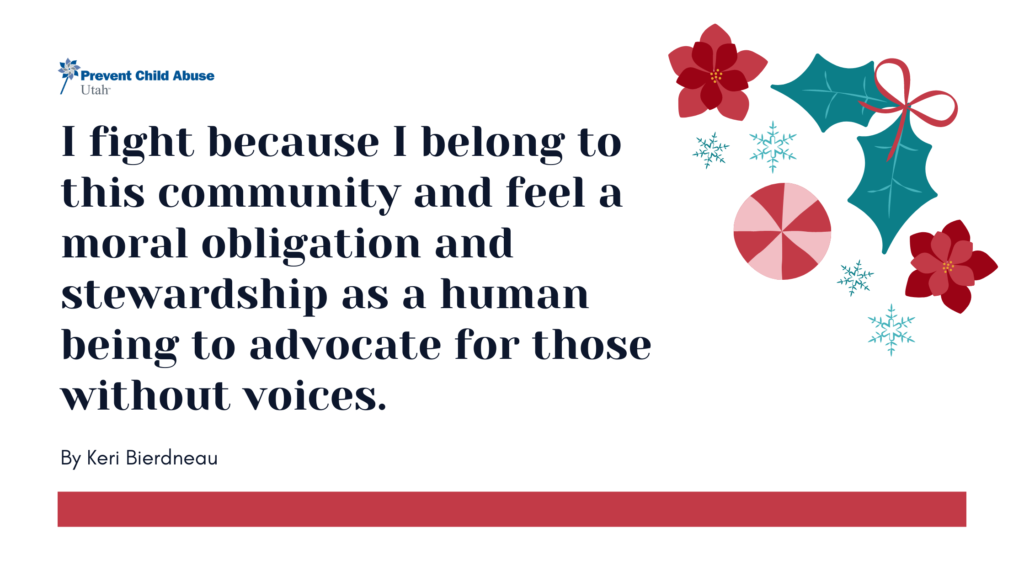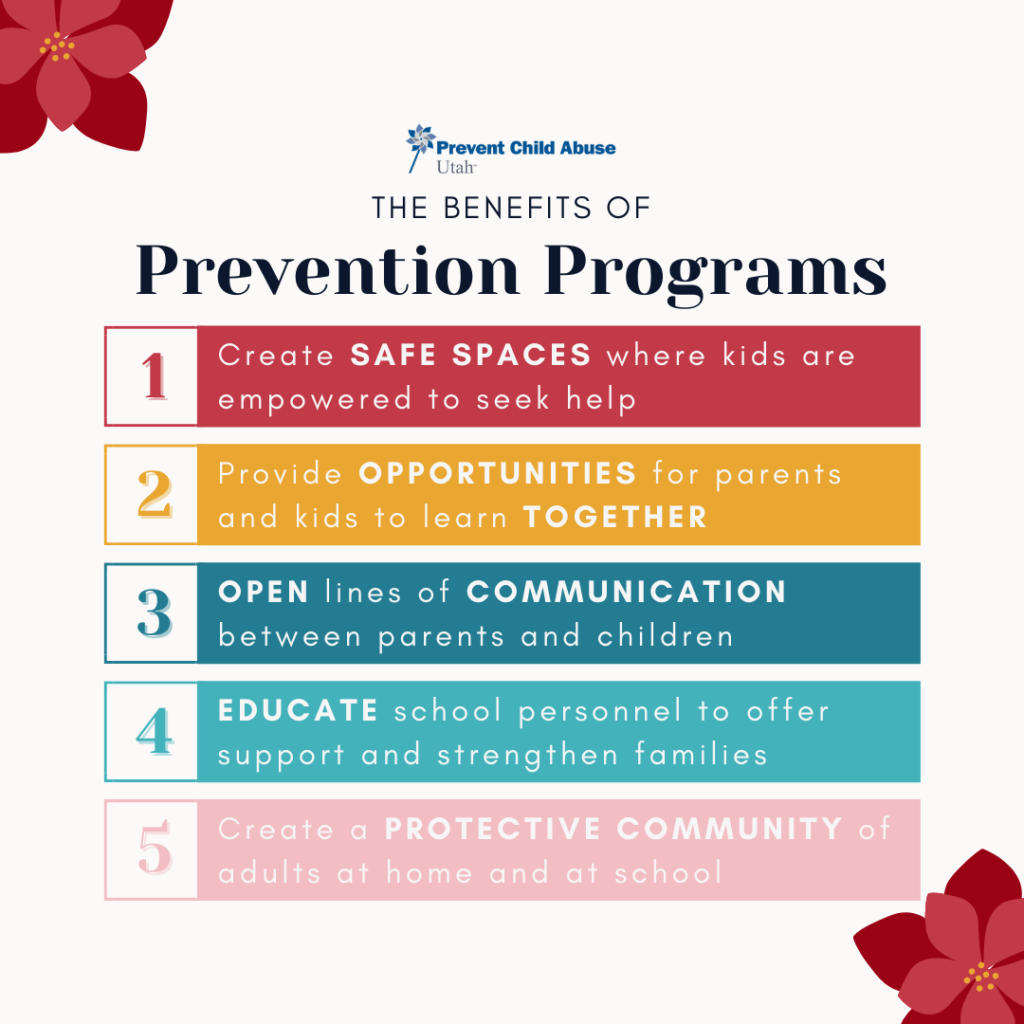
By Keri Beirdneau
This article contains descriptions of physical abuse that may be triggering for some individuals
My name is Keri, and I am a survivor. In sharing little snippets of my physical abuse, I hope to illuminate the pain, confusion, and lasting effects of abuse. I also hope you’ll join me in advocating for child abuse prevention education.
Childhood Disrupted
I was five years old the first time I got whipped. Whenever my stepdad (Russ) decided an arbitrary rule was broken, he busted out the belt. These punishments were no more helpful in transforming me from a child into a successful adult than they would be turning a fish into a bird. I was little, and I didn’t know how to do better, so the beatings continued. As time went on, his frustrations grew, and the tactics intensified. He’d use shoes, belt-buckles, or expose my bare skin to the lashings. The worst of all of these was when he convinced my mother to participate. It had been devastating enough to have her be a silent bystander, unprotective and unfeeling toward her own children. To then strike me herself: it was a blow I will never forget.
Physical abuse is almost always accompanied by emotional abuse as well. I had an older brother (age 7) who began wetting the bed. Russ took this opportunity to terrorize us both. I remember the “goodnights” ending in detailed stories of how Russ was going to slowly torture my brother to death if he wet the bed. Each night I prayed that God would save my brother’s life, and each morning, I rushed into his room to see if he was still alive.
I quickly learned that the brutality would end sooner if I didn’t resist. This applied especially during family play. When we wrestled, Russ would get gleefully aggressive, contorting our limbs in ways that made us scream out in pain or digging his fingers into us so forcefully that they left bruises. The more we fought back, the more intoxicated he became. I learned that saying “no” or fighting back was dangerous, which put me in many compromised positions throughout my youth.

A Broken System
Unfortunately, I thought it was okay for adults to hurt children because I was also being spanked by my own dad. I never told him what was happening at my mom’s house. Although I didn’t disclose the abuse verbally, my psyche couldn’t stay quiet. I began having violent night terrors. After I fell asleep, I ran around the house screaming and fighting anything that touched me. Concerned, my dad took me to a therapist who recognized the signs of abuse and revealed what was happening. This began a painful journey to find safety–one that involved numerous therapists, police interviews, and court appearances.
It took three long years to gather adequate evidence to justify a restraining order against my stepdad. That’s 1095 days, 26,280 hours, 1,576,800 minutes, of living in fear and pain. I am so grateful for all of the people that worked tirelessly to protect me and my siblings.
Fighting for Child Abuse Prevention in Schools
That’s not the end of my story however–it’s the catalyst to my efforts in advocacy. Once I grew into adulthood, I sought healing through therapy and a support group. As I gained the strength to step into my power as a woman and a mother, my energy transitioned from healing myself to looking for ways I could help the children around me. I never wanted a child to go through what I had gone through. Initially, I wasn’t sure what to do or how to affect change. When I heard about Prevent Child Abuse Utah and its work to educate, empower, and protect children, I knew I had people in my corner, fighting for the same cause.
For three years, I persuaded my children’s school principal, social worker, teachers, PTA, and school district office to get Prevent Child Abuse Utah’s child abuse prevention programs into our school. In 2019, Provost Elementary became the first school in Provo School District to offer this vital information to children. Every teacher that had reservations prior to the presentation expressed gratitude and enthusiasm afterward. They felt the material was handled delicately and appropriately and were proud to have been a part of protecting these children they cared so deeply for. Utah’s laws do not require schools to provide education directly to children about what to do if someone is abusing or neglecting them. This information is so important — and it requires everyone to speak up and advocate for these programs. What happens to one of us affects all of us in ways that we don’t even realize.

Become an Advocate
I could have become a burden on society, another statistic, but instead, I am a strong, accomplished, active leader in my community. I give credit to my father for continuing to fight for me. Through his actions to protect me and my siblings, he validated that what was happening was wrong. He helped restore my dignity. He showed me my value in that fight. The memory of him empowers me every day to take action and follow his example.
Now, I speak for the little girl, with ribbons in her hair, who needs a grown-up to step in-between her and a bruising backhand. I fight for the little boy whose innocence allows for a belief in the tooth fairy while lacking the understanding that no one gets to touch his private parts. I advocate because every day can be torture for children being abused or neglected. Every day, I see their sweet faces reminding me to stay out of complacency. I fight because I belong to this community and feel a moral obligation and stewardship as a human being to advocate for those without voices. Please join me in preventing child abuse. Ask your school officials to provide prevention services in every classroom.
And just like we tell the children, keep talking until someone listens.
Click here to learn more about and schedule prevention programs at your school.
